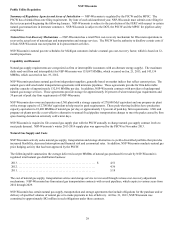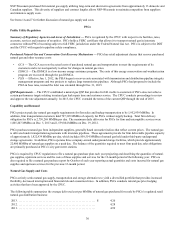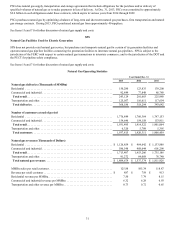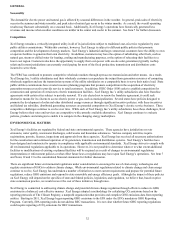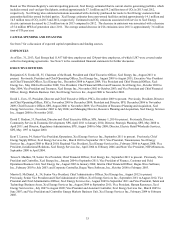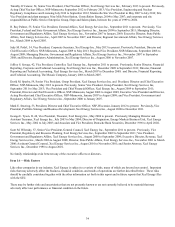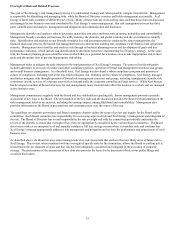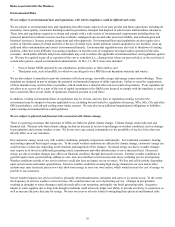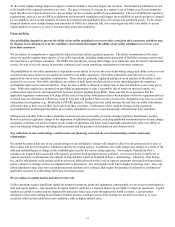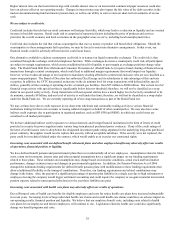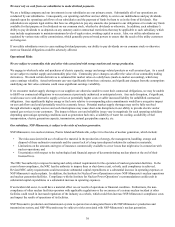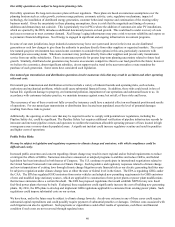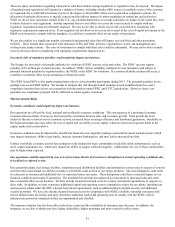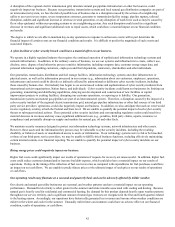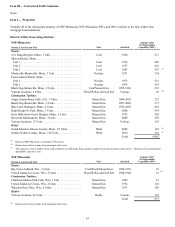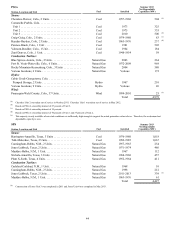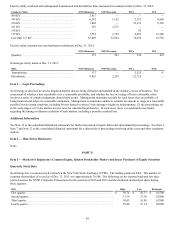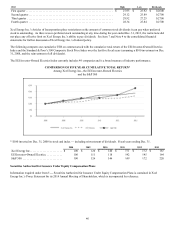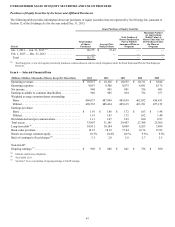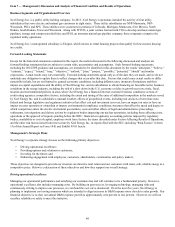Xcel Energy 2013 Annual Report Download - page 57
Download and view the complete annual report
Please find page 57 of the 2013 Xcel Energy annual report below. You can navigate through the pages in the report by either clicking on the pages listed below, or by using the keyword search tool below to find specific information within the annual report.39
We must rely on cash from our subsidiaries to make dividend payments.
We are a holding company and our investments in our subsidiaries are our primary assets. Substantially all of our operations are
conducted by our subsidiaries. Consequently, our operating cash flow and our ability to service our indebtedness and pay dividends
depends upon the operating cash flows of our subsidiaries and the payment of funds by them to us in the form of dividends. Our
subsidiaries are separate legal entities that have no obligation to pay any amounts due pursuant to our obligations or to make any funds
available for that purpose or for dividends on our common stock, whether by dividends or otherwise. In addition, each subsidiary’s
ability to pay dividends to us depends on any statutory and/or contractual restrictions that may be applicable to such subsidiary, which
may include requirements to maintain minimum levels of equity ratios, working capital or assets. Also, our utility subsidiaries are
regulated by various state utility commissions, which generally possess broad powers to ensure that the needs of the utility customers
are being met.
If our utility subsidiaries were to cease making dividend payments, our ability to pay dividends on our common stock or otherwise
meet our financial obligations could be adversely affected.
Operational Risks
We are subject to commodity risks and other risks associated with energy markets and energy production.
We engage in wholesale sales and purchases of electric capacity, energy and energy-related products as well as natural gas. As a result
we are subject to market supply and commodity price risk. Commodity price changes can affect the value of our commodity trading
derivatives. We mark certain derivatives to estimated fair market value on a daily basis (mark-to-market accounting), which may
cause earnings volatility. Actual settlements can vary significantly from these estimates, and significant changes from the assumptions
underlying our fair value estimates could cause significant earnings variability.
If we encounter market supply shortages or our suppliers are otherwise unable to meet their contractual obligations, we may be unable
to fulfill our contractual obligations to our customers at previously authorized or anticipated costs. Any such disruption, if significant,
would cause us to seek alternative supply services at potentially higher costs or suffer increased liability for unfulfilled contractual
obligations. Any significantly higher energy or fuel costs relative to corresponding sales commitments would have a negative impact
on our cash flows and could potentially result in economic losses. Potential market supply shortages may not be fully resolved
through alternative supply sources and such interruptions may cause short-term disruptions in our ability to provide electric and/or
natural gas services to our customers. The impact of these cost and reliability issues vary in magnitude for each operating subsidiary
depending upon unique operating conditions such as generation fuels mix, availability of water for cooling, availability of fuel
transportation, electric generation capacity, transmission, natural gas pipeline capacity, etc.
Our subsidiary, NSP-Minnesota, is subject to the risks of nuclear generation.
NSP-Minnesota’s two nuclear stations, Prairie Island and Monticello, subject it to the risks of nuclear generation, which include:
• The risks associated with use of radioactive material in the production of energy, the management, handling, storage and
disposal of these radioactive materials and the current lack of a long-term disposal solution for radioactive materials;
• Limitations on the amounts and types of insurance commercially available to cover losses that might arise in connection with
nuclear operations; and
• Uncertainties with respect to the technological and financial aspects of decommissioning nuclear plants at the end of their
licensed lives.
The NRC has authority to impose licensing and safety-related requirements for the operation of nuclear generation facilities. In the
event of non-compliance, the NRC has the authority to impose fines or shut down a unit, or both, until compliance is achieved.
Revised NRC safety requirements could necessitate substantial capital expenditures or a substantial increase in operating expenses at
NSP-Minnesota’s nuclear plants. In addition, the Institute for Nuclear Power Operations reviews NSP-Minnesota’s nuclear operations
and nuclear generation facilities. Compliance with the Institute for Nuclear Power Operations’ recommendations could result in
substantial capital expenditures or a substantial increase in operating expenses.
If an incident did occur, it could have a material effect on our results of operations or financial condition. Furthermore, the non-
compliance of other nuclear facilities operators with applicable regulations or the occurrence of a serious nuclear incident at other
facilities could result in increased regulation of the industry as a whole, which could then increase NSP-Minnesota’s compliance costs
and impact the results of operations of its facilities.
NSP-Wisconsin’s production and transmission system is operated on an integrated basis with NSP-Minnesota’s production and
transmission system, and NSP-Wisconsin may be subject to risks associated with NSP-Minnesota’s nuclear generation.


